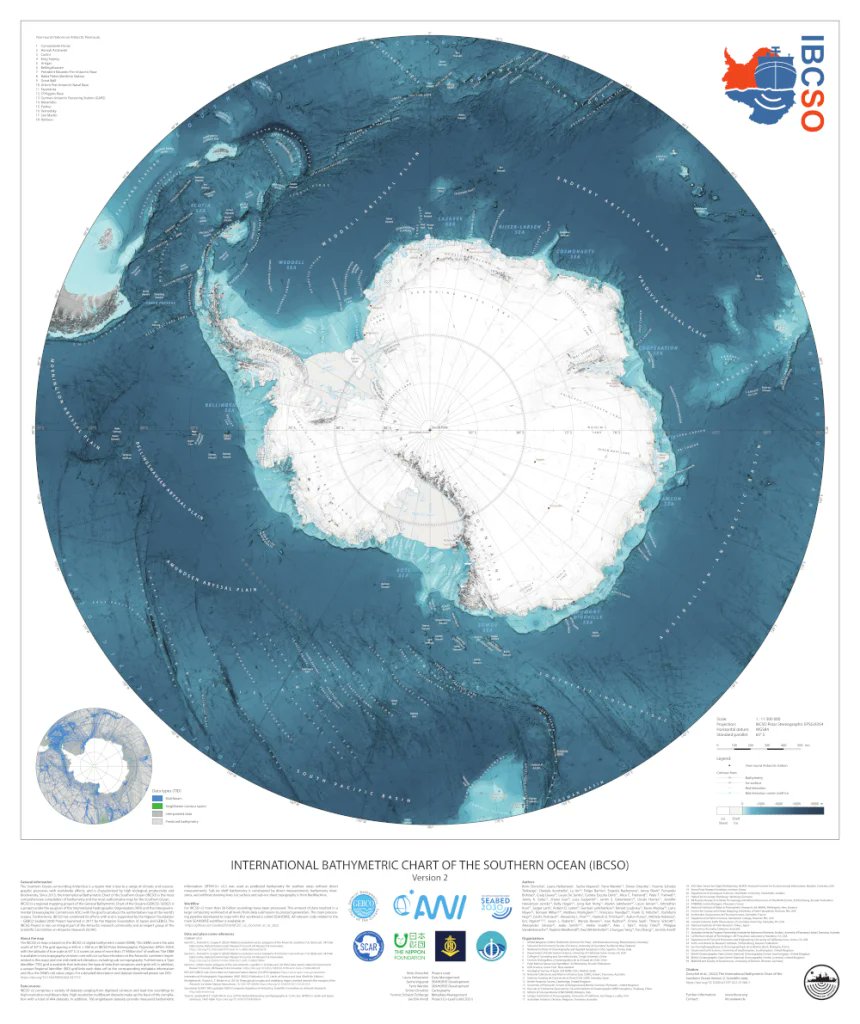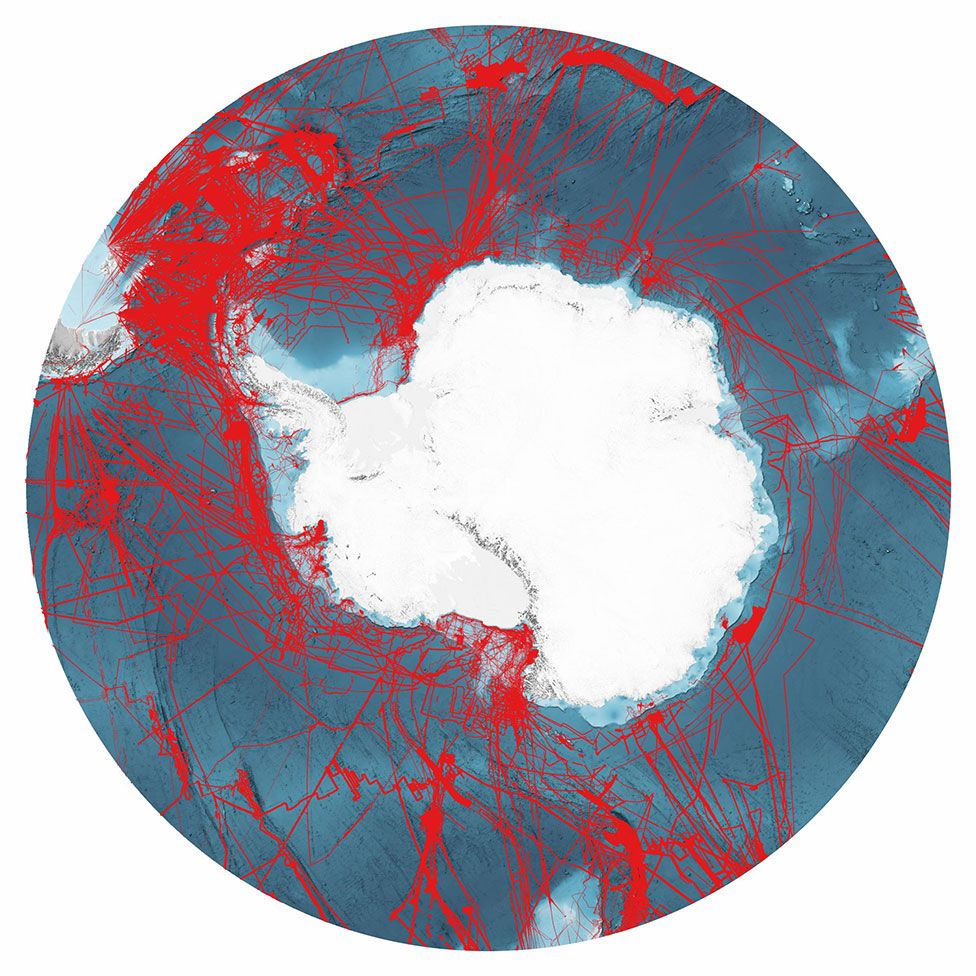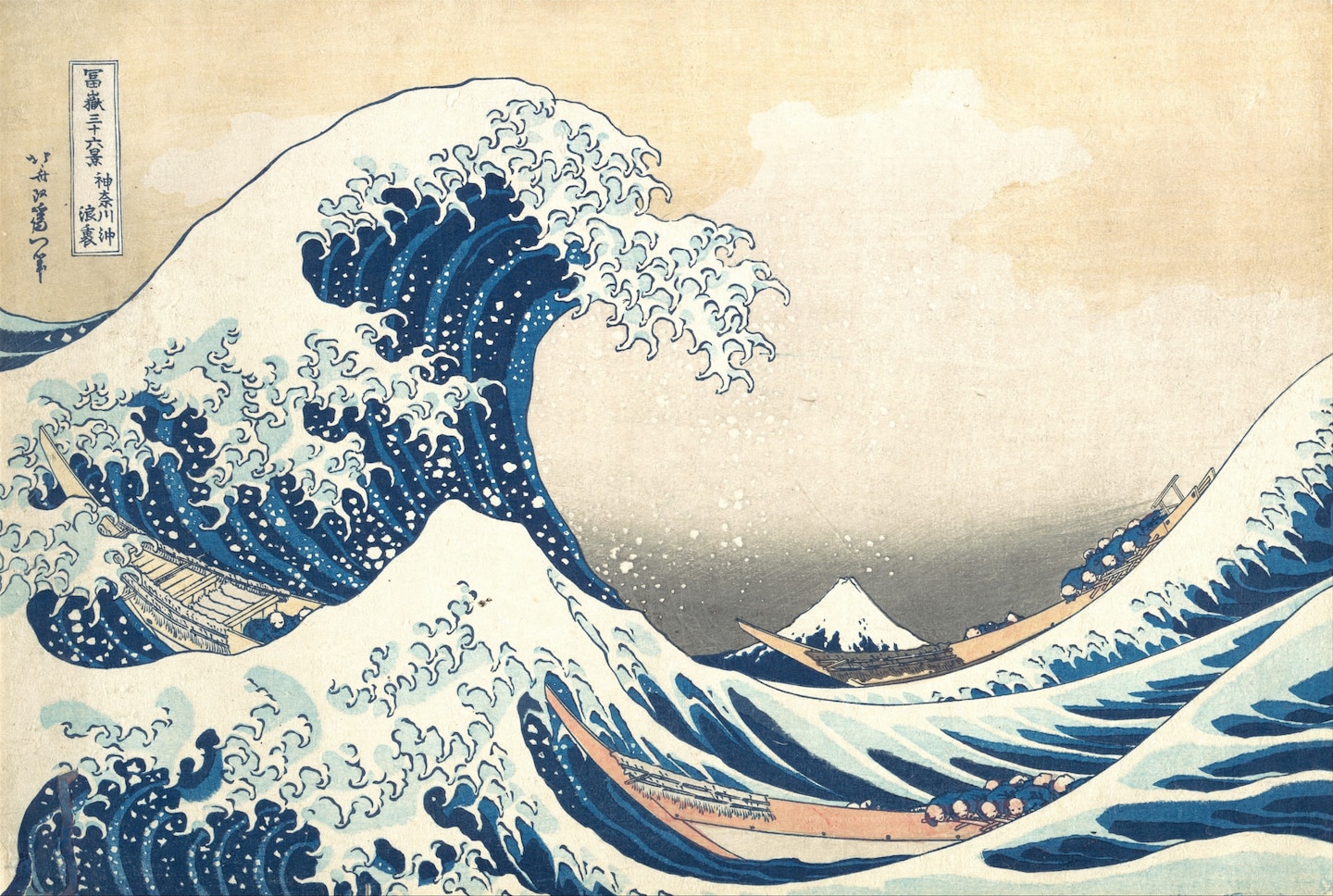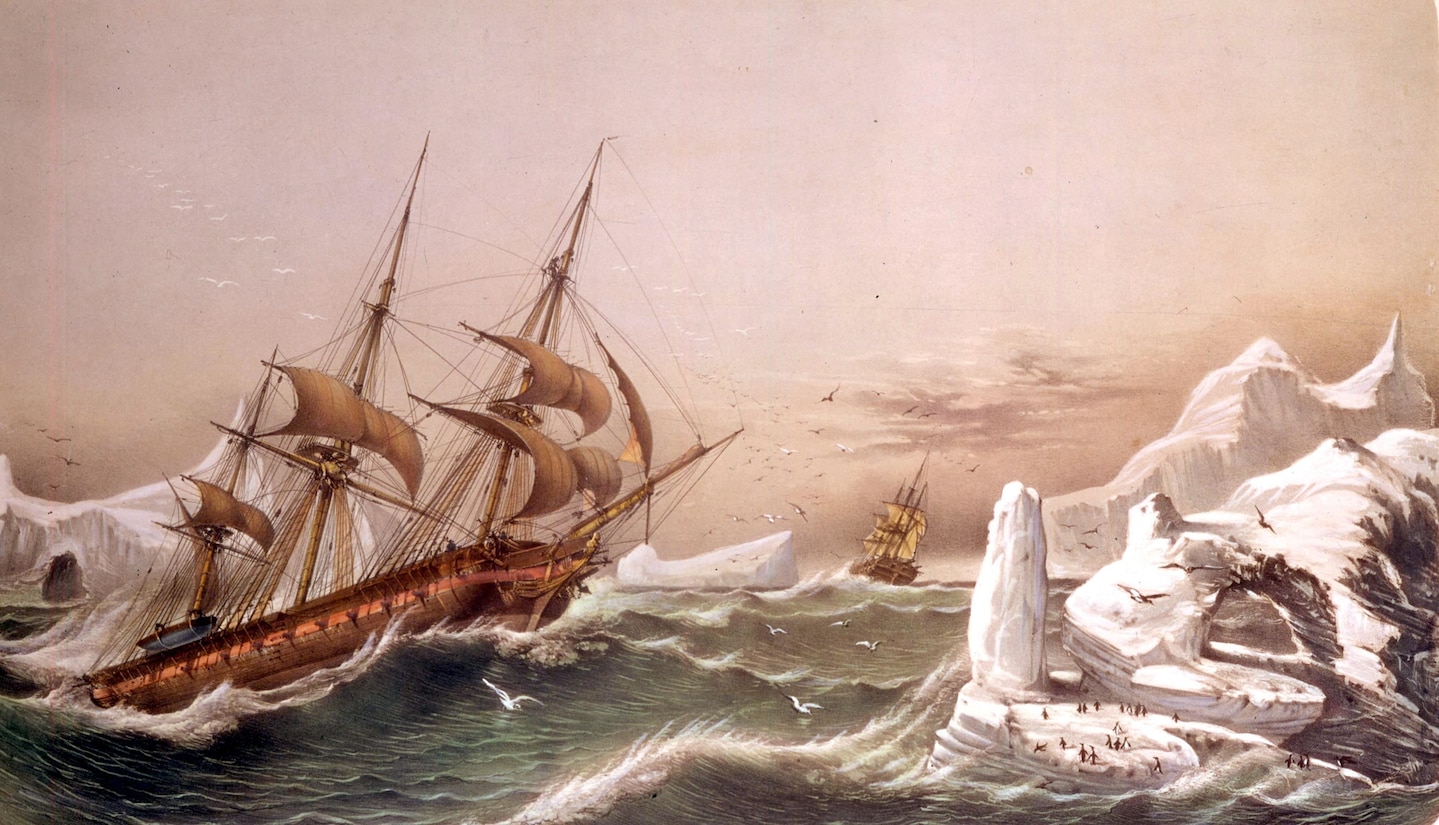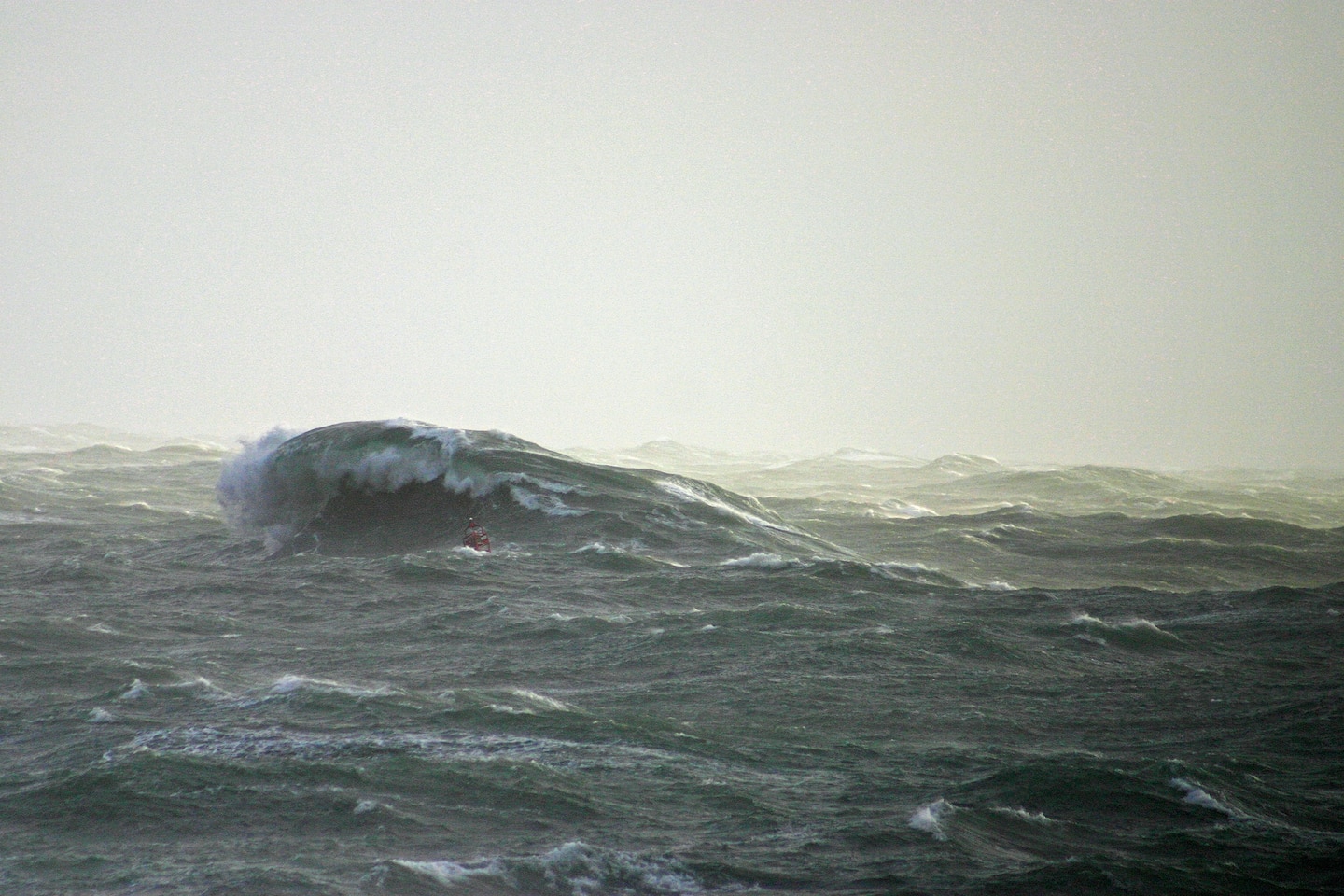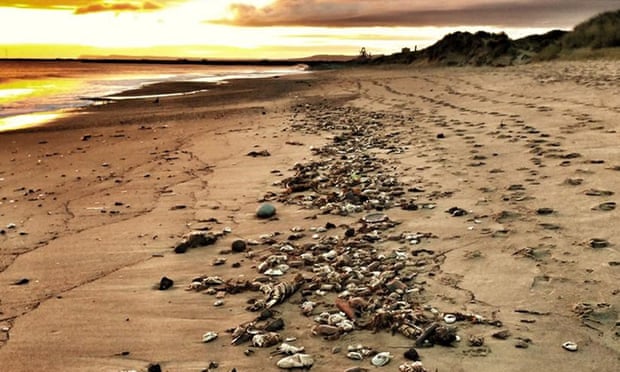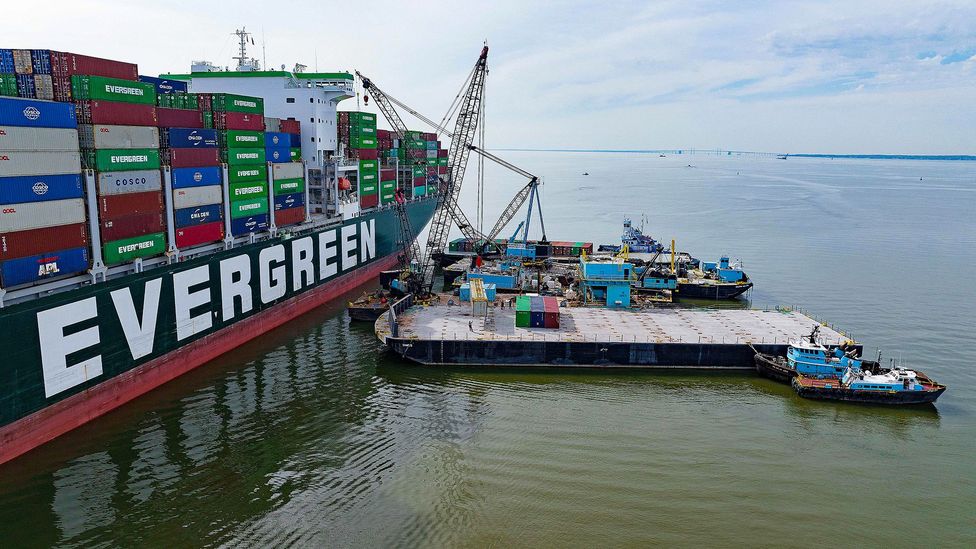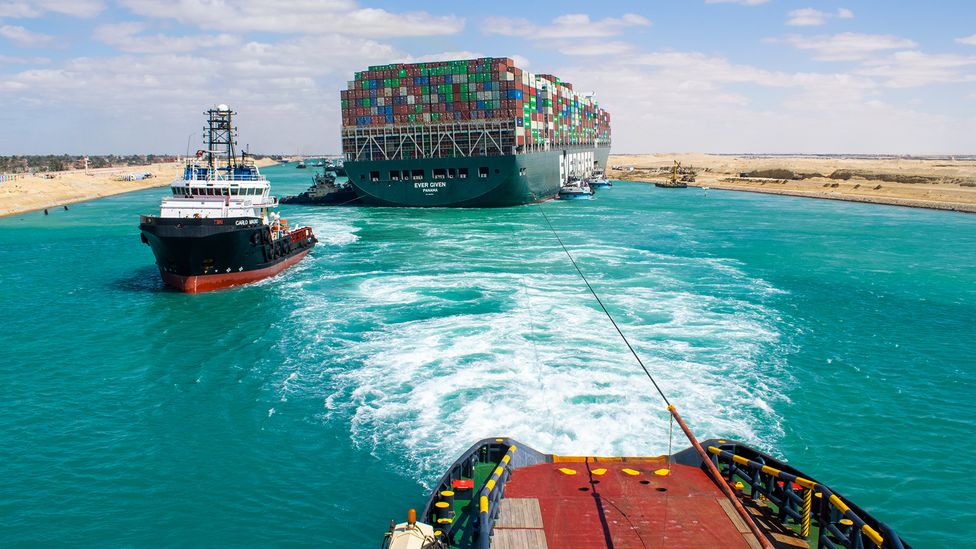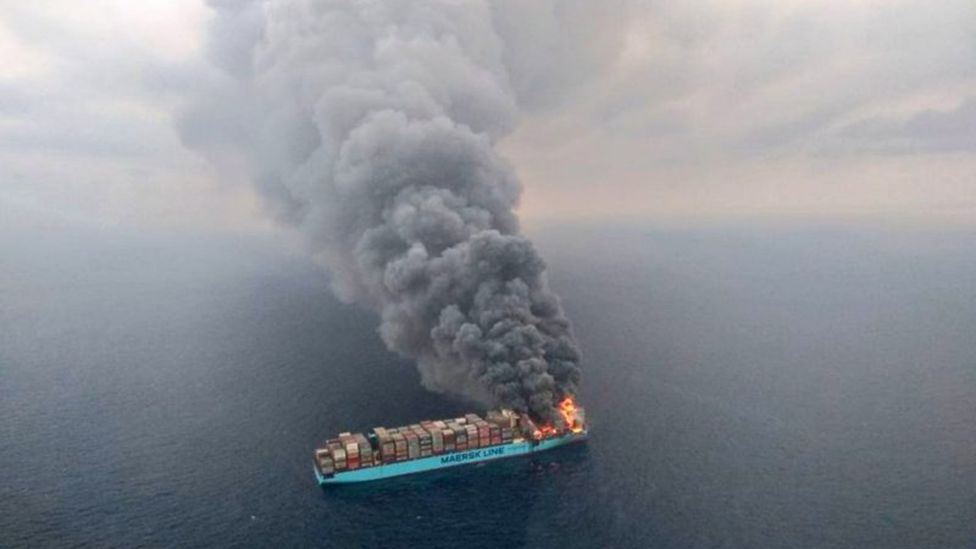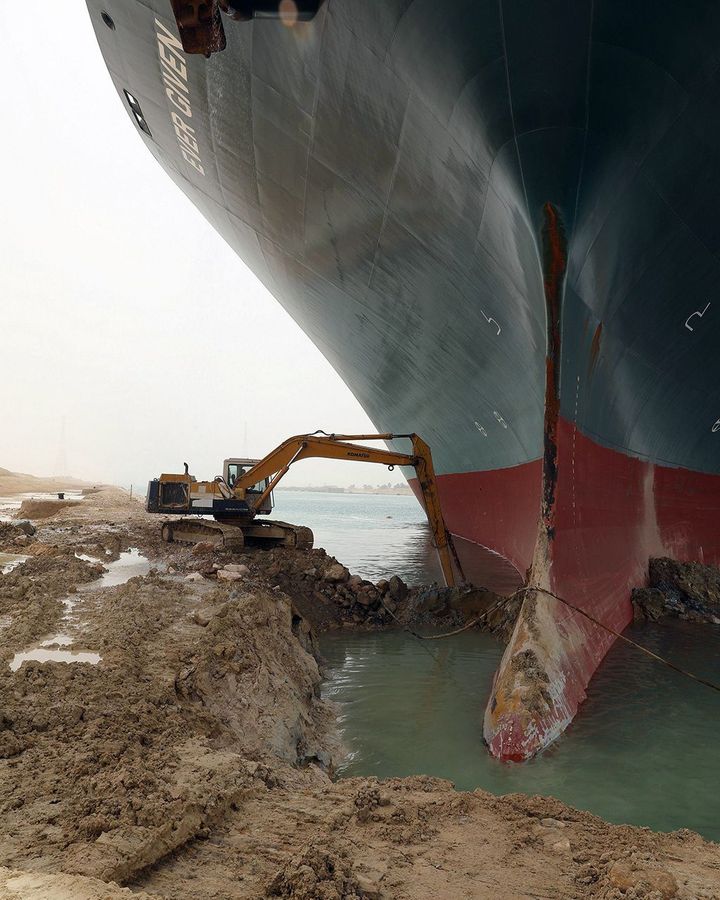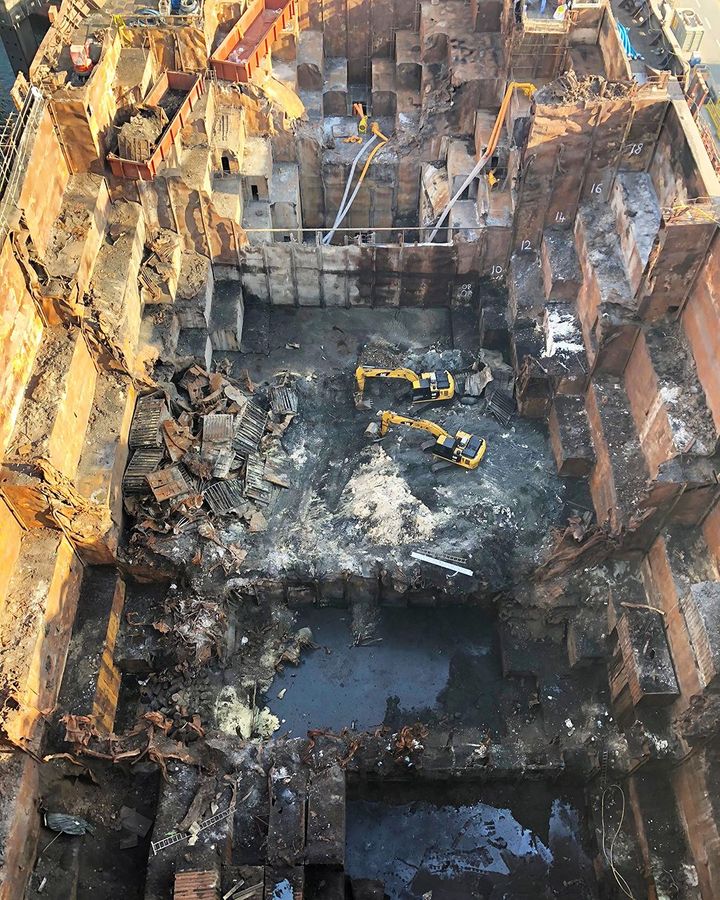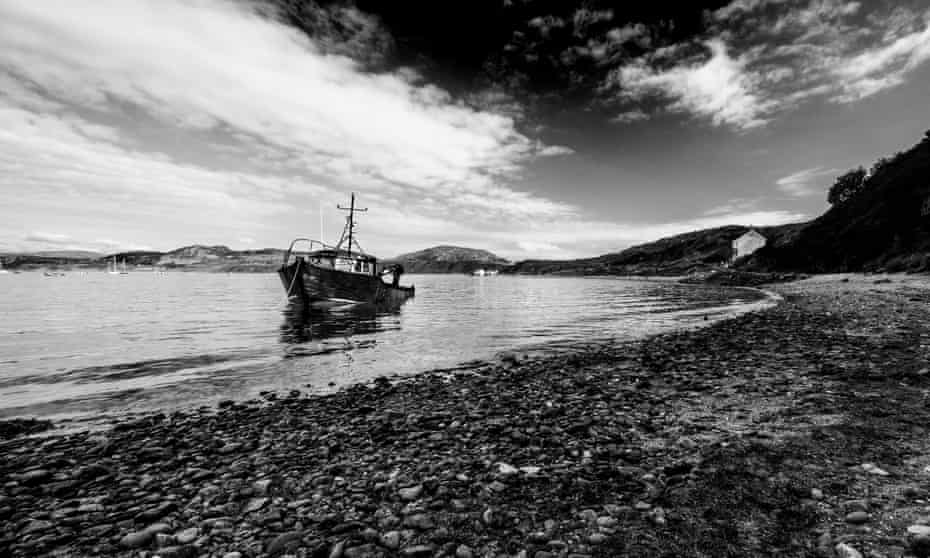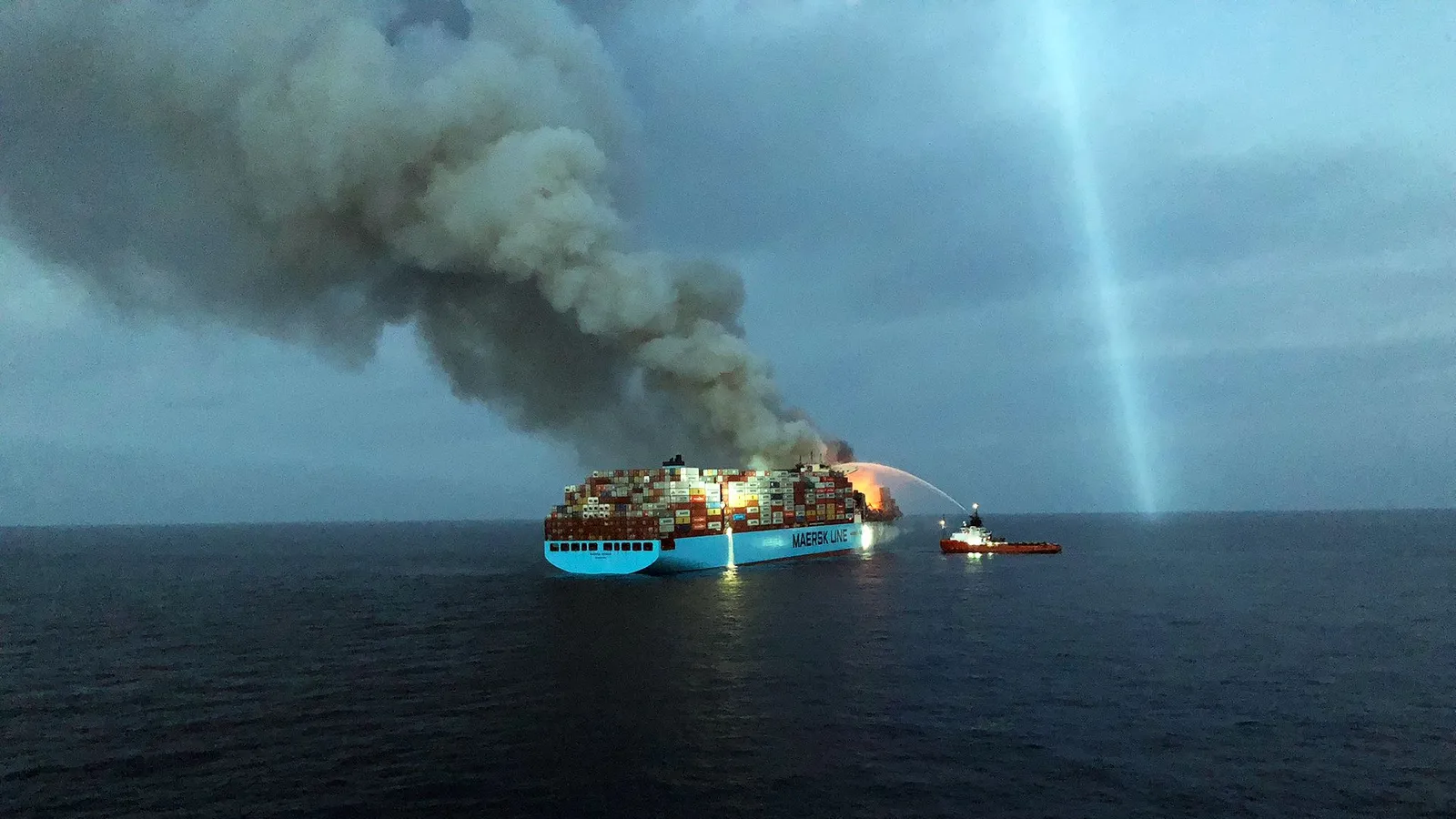
From BBC by Chris Baraniuk
Enormous container ships ferry goods all over the world, but when one of them gets into trouble – as happened with the Ever Given and Ever Forward recently – how can they be saved? Rain lashed the windows.
A violent sea pounded the steel hull of the ship and the wind roared with primeval power.
It was the middle of the night in the summer of 2010.
The Kota Kado, a 230m-long container ship, had run aground outside the port of Hong Kong.
Her crew had evacuated but standing on the bridge in his life jacket, prepared for the worst, was salvage master Captain Nick Sloane.
He beheld the force of the typhoon that now, in the darkness, raged over the stricken vessel.
Sloane was holed up with just five other members of the salvage team.
Days earlier, they had arrived to the South China Sea with the aim of saving the Kota Kado.
When typhoons were forecast to batter the grounded ship, Sloane made the decision to stay on board overnight with a skeleton crew.
He wanted to feel how the vessel flexed in the storm, to understand where it hit her hardest, knowing that this would inform whatever measures they took next.
But it was a very close call.
"We nearly lost her that night," he says.
The world's cargo ships, which transport
around 90% of global trade, do not always make it to their destination without incident.
According to the Safety and Shipping Review by insurance company Allianz,
27 cargo vessels were lost in major incidents during 2021, and 357 during the past decade.
They catch fire.
They hit rocks, reefs and sand bars.
They malfunction.
But they don't always sink.
Whenever there's a chance to rescue a large ship, their owners almost always take it because these vessels can be worth hundreds of millions of dollars.
The people that shipping firms call on in such situations are called salvors.
And they have seen some extraordinary things at sea.
Salvors came to the aid of
the huge Ever Given container ship after she ran aground, blocked the Suez Canal, and triggered global supply chain issues last year, for example.
But when a ship weighing tens or hundreds of thousands of tonnes gets stuck somewhere, how do you free it?
Removing containers from stricken vessels like the Ever Forward – which ran aground in Chesapeake Bay near Baltimore – is a delicate process
(Credit: Jim Watson/AFP/Getty Images)Sloane, now a director at Resolve Marine Group, was on his way home from a World Cup match in South Africa when his phone rang and he first heard that the Kota Kado had got into trouble.
He flew to Hong Kong the next day.
The ship had struck a reef on its way to port, which sliced a hole in her side.
Two cargo holds began filling with water and she subsided until she eventually ran into a sediment bank about 25 nautical miles (46km) southwest of her destination.
Her bow ploughed into the seabed, trapping her.
And as more water flooded on board, the heavily laden ship began to sink.
Many were sceptical that she could be rescued at all, remembers Sloane: "A lot of the surveyors said, 'OK, the ship's completely lost, get ready for a wreck removal contract'." But he thought she still had a chance.
"She kept on sinking and the bow, literally every day, sank another half-a-metre to a metre (1.6-3.2ft)," he says.
"It was touch-and-go."
Sloane and his colleagues came up with a plan to reduce the mass of the vessel and pump as much water out of her as possible.
This required lighters – barges, which, in Hong Kong, come equipped with large cranes.
Luckily,
this is often how cargo is unloaded in Hong Kong anyway, so lots of these barges were available and their operators were already well-accustomed to heaving containers off vessels for transport to shore.
Sloane wanted as much cargo removed as possible.
In the end, the lighters extricated more than 1,200 individual containers.
This sort of operation is time-consuming and difficult, especially given that the Kota Kado was sitting with her bow under water.
Plus, the lightest containers tend to be stacked at the top since this helps to lower a ship's centre of gravity and keep her stable – but that means it takes even longer to reach the heavy containers whose removal really makes a difference.
Huge amounts of clay, mud and sand had to be removed to refloat the Ever Given when it became stuck for six days the Suez Canal
(Credit: ALP Maritime Services)
Then there were the giant snorkels.
To get water out of the vessel, Sloane and his team deposited large pumps under water at the bottom of one of the cargo holds.
They also removed hatches on the deck above and welded huge rectangular tubes, or snorkels, onto them before putting them back in place.
The snorkels now dangled down into the belly of the ship.
Finally, a team of divers connected the pumps below to two sets of hoses that extended vertically up through the snorkels.
The pumps ran flat out, remembers Sloane, to stop water filling the engine room, which contains the most expensive and sensitive machinery.
Eventually, having removed huge volumes of water from the hold, the salvage team was able to fill some of the ship's ballast tanks with air in order to refloat her.
Had they tried to do this earlier, the tanks could have ruptured, explains Sloane: "When you get below 10m (33ft), you've got to be very careful about how much pressure you introduce."
Through all of this complicated work, and in spite of not one but two typhoons, the second of which was particularly bad, the Kota Kado was saved and eventually
towed to a shipyard for repairs.
She is still sailing today, though under a different name.
When ships end up in places they were not really designed for, such as stuck fast in mud or pinned against rocks, the forces of nature can tear them apart.
That's why heavy storms presented such a great threat to the Kota Kado.
"Like a paperclip, the more times you bend it, eventually it snaps," says Rosalind Blazejczyk, managing partner and naval architect at Solis Marine Consultants.
She explains how problematic it is when a grounded ship is lifted or twisted by successive waves.
They can crash into it for hours in a swell or high tide, pushing one end of the vessel up and throwing it down again.
Suddenly,
steel doesn't seem so strong in those situations.
Sloane mentions how his team sometimes weld huge girders to the deck of a ship simply to hold it together.
We try to bring order to chaos – Richard Janssen
Blazejczyk says that salvage experts such as herself generally use three dimensional computer models of the ship they are trying to save, in order to better judge the effects of forces acting upon it.
"Some ship companies have emergency response services where a model of the ship has been created and is ready to go," she adds.
Salvage teams will place sensors all over the hull to track how it moves and flexes during the operation.
Data from those sensors feed into the model automatically, which in turn highlights when a particular part of the ship might be at risk of cracking.
Salvors might also use lasers, trained on a stricken ship, to monitor its movement in fine detail.
Tugs that attempt to pull ships free also exert significant forces – but, generally, this alone is nowhere near sufficient to liberate a grounded vessel, says Blazejczyk.
This is because the tugs are faced with fighting against what's called the ground reaction force.
Blazejczyk recalls one grounding were she calculated that the salvors would have needed 200 tugs to pull the vessel free – an impossible prospect.
Instead, teams must often lighten ships somehow or clear away the sediment that has trapped them before they'll budge.
Sometimes there is huge pressure to do this work as quickly as possible.
When the Ever Given, one of the largest container ships in the world, got stuck in the Suez Canal on 23 March last year, the ship lay diagonally across the waterway, blocking all traffic.
It took six days for her to be freed, during which time more than 200 other vessels were prevented from passing through, leading to a queue of ships more than
60 miles (100km) long as they waited to get through.
A grounding that becomes a blockage tends to be much more high profile.
Leendert Muller, managing director of Multraship, recalls the grounding of the container ship
the CSCL Jupiter outside the port of Antwerp in 2017.
Antwerp is the second-largest port in Europe, after Rotterdam.
Fires on board container ships are a continual hazard on cargo ships, especially when hazardous material not accurately declared
(Credit: Indian Coast Guard/GODL India)
"When the trade comes to a stop there, it stops the trade at other ports in Europe because it's a whole chain of trade," explains Muller.
The salvors that came to the aid of the Ever Given, from Boskalis and its subsidiary SMIT Salvage, were well aware of the high stakes.
"We try to bring order to chaos," says Richard Janssen, managing director of SMIT.
In this case, the Suez Canal Authority used a dredger and excavators to remove a huge volume of mud and sand from below the ship – 30,000 cubic metres (1.06 million cubic feet) in total.
Such was the intensity of public interest in the incident that people starting sharing jokes and memes about the Ever Given on social media.
Many poked
fun at the seemingly diminutive digger that was pictured heaving sand away from around the massive ship's bow.
The vehicle belonged to the Suez Canal authority, not Boskalis or SMIT.
"The digger looks funny because it's relatively small given the size of the vessel but it did actually do a relatively good job," says Janssen, explaining that removing some of the clay from this area helped ensure the Ever Given had enough space to swing free during the refloating operation.
Dredging is a tricky business, too.
It's easier to displace sand says Janssen, whereas mud can be more stubborn.
Images of excavators working to clear the silt and mud around the bow of the Ever Given emphasised the enormous scale of the stuck vessel
(Credit: UPI/Alamy)
SMIT was again called upon to rescue the Ever Forward, along with local firm Donjon Marine.
Initial efforts to tow the vessel free proved unsuccessful so the salvors turned to removing containers one by one.
A total of 510 12m (40ft) containers were taken off – though, notably, that's just a fraction of the cargo on a ship that can carry several thousand such containers.
A combination of this cargo removal, dredging and lowering of ballast water levels inside the ship, among other techniques, eventually succeeded in freeing the Ever Forward
one month after she ran aground.
Groundings are nightmare scenarios for floating vessels but fires are among the greatest dangers at sea.
Despite all of the water that is typically nearby, it can be very hard to put out a blaze in the middle of the ocean.
On ships packed with fuel and sometimes highly flammable or explosive cargo, the risks are immense.
In recent years, ships carrying cars have been particularly vulnerable to fires as malfunctions or short circuits have sparked onboard blazes.
Lithium-ion batteries – especially those in electric vehicles – are now considered
a growing risk for cargo ships, according to insurers.
In recent years, ships carrying cars have been particularly vulnerable to fires as malfunctions or short circuits have sparked onboard blazes
In 2018, the Maersk Honam, an ultra large container ship 353m (1,158ft) long, caught fire in the Arabian Sea on its way to the Suez Canal.
Tragically,
five seafarers lost their lives in the incident.
But 22 crew members survived – and the ship did too,
thanks to the efforts of SMIT Salvage.
"It was a very intense fire in the forward section of the vessel and of course you're assessing, 'How is this fire going to develop over time?'," explains Janssen.
Keeping the blaze contained to the front of the ship avoided damage to the engine room and accommodation to the rear.
It was the biggest fire SMIT has ever tackled at sea, says Janssen.
It burned on board for a month but salvors brought it under control and
eventually extinguished it after towing the ship to a port in Dubai.
After the fire was extinguished on board the Maersk Honam, the debris was removed by diggers and eventually the entire bow section was cut off and replaced
(Credit: Boskalis)
Later, at a repair yard, the entire bow section of the Honam was cut off and a new one installed so that she could return to service under a new name, Maersk Halifax,
a little over a year after the fire.
Blazejczyk notes that one of the difficulties of putting out a fire on a ship is that, while water is essential to tackle the blaze, you don't want to fill the ship's holds up completely, otherwise the vessel will become unstable or simply sink.
Plus, fires can damage fuel containers on board, cause explosions, and send huge volumes of contaminants into the sea.
Fuel oil and polluted water left in the sea after ship fires must be recovered and treated, says Captain John Simpson, Blazejczyk's colleague at Solis.
"The sums can rise into the millions," he adds.
Navigational technology has improved in recent years, says Muller, which means ship collisions and groundings ought to become less common, on average, with time.
But the flipside is that container
ships have gotten significantly bigger and more unwieldy in the last decade or two.
The container-carrying capacity of the world's largest ships are today 15 times what they were in the late 1960s.
The world's largest container ship – the Ever ACE –
has a capacity of 23,992 TEUs (20ft equivalent units) and
is 399m (1,309ft) long compared to 1,578 TEUs capable of being carried by the
227m (745ft) long Encounter Bay when it entered service in 1969.
With increasing size, the impact of groundings is also getting bigger, says Muller.
Sloane adds that it is getting harder to save the largest ships when fires break out or when they do hit sand bars and mud banks.
The worry is that salvors will increasingly face obstacles that are just too great to overcome.
And who knows how that could ricochet through global supply chains, if ships keeping getting into trouble along busy canals or outside major ports.
"Off Hong Kong, you could get these barges around it, Chesapeake Bay, they could get barges around it," Sloane adds, referring to the Kota Kado and the Ever Forward.
But, he warns, there is a risk that eventually, one of the larger container ships could run aground in a location where it's much harder to access in such a way during any recovery operation.
"That's going to be challenging," he says.
"I think it is going to happen."



 EMIRATES TEAM NZ
EMIRATES TEAM NZ
